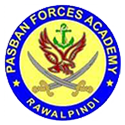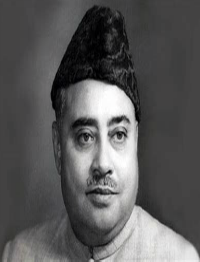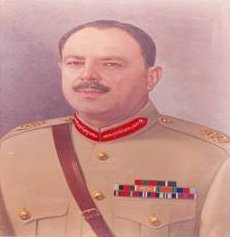JOIN PAKISTAN ARMY IN ARMED FORCES NURSING SERVICE (AFNS) ENTRY 2018/2019
1. Eligibility Conditions
Qualification / Age
Type of Commission Qualification Age
► AFNS – BSc Nursing (Female)
Matric with Science – 60% Marks Minimum
F.Sc (Pre-medical) – 50% Marks Minimum
17-25 years as on 31 December 2018
► Trained Nurse as Lieutenant (Female) Nursing Diploma and Midwifery.
B.Sc Generic Nursing.
Post (RN) B.Sc Nursing
18-28 years as on 30 November 2018
Note for BSc Nursing
► Appearing candidates in FSc Part-II examination (having 50% marks in 1st year) may apply with HOPE certificate duly signed by the Principal of concerned college / institution for attaining 50% marks. On declaration of Part-II result, candidates should submit FSc marks sheet immediately.
Note for Trained Nurse
► A candidate should be registered with Pakistan Nursing Council (PNC).
► Preference will be given to qualified post basic specialized courses i.e ICU, OT, CCU etc from a hospital/institute recognized by PNC.
Marital Status
► Bsc Nursing. Female unmarried / widow / separated / divorce without encumbrances.
► Trained Nurses. Married/Unmarried
Nationality. Citizens of Pakistan and domicile holders of Azad Kashmir / Gilgit-Baltistan. Upon final selection candidates with dual nationality will have to surrender nationality other than Pakistani.
Physical Standards
► Minimum Height – 5’ Feet (152 cm)
► Weight – As per the Body Mass Index.
2. Ineligibility Conditions
Twice rejected by the GHQ Selection Board.
Declared Medically Unfit by Appeal Medical Board.
Individual withdrawn/resigned/discharged from Armed Forces (Army, Navy and Air Force) training academies/institution on the ground of discipline, character, medical inefficiency, weak profile or declared unsuitable.
Individual dismissed/removed from any other government service.
For BSc Nursing only – candidates already registered with Pakistan Nursing Council.
Convicted by a Court of Law for an offence involving moral turpitude.
3. Registration and Preliminary Selection Procedure. Candidates can either register through Internet or by visiting Army Selection and Recruitment Centres (AS&RCs).
Following procedure will be adopted:-
Registration Through Internet. A candidate can register on website www.joinpakarmy.gov.pk. Date and time of test shall be intimated on individual’s e-mail address. Candidates will report on date and time given for preliminary test on computerized roll number slip. Date once given will not be changed. Candidates will also bring documents mentioned in para 6 and will pay prospectus fee on the day of test. Candidates must attain working knowledge of computer.
Registration at AS&RCs. The candidates may report at nearest AS&RC for registration/allotment of roll number along with necessary documents mentioned in para 6 and the prospectus fee for completion of registration formalities. The candidates will bring these documents on the day of test as well.
Selection Of Registration / Preliminary Test. Registration and preliminary test will be held as per the following schedule:-
► Registration – 09 July – 02 August 2018
► Preliminary Test – 06 Aug – 29 August 2018
Preliminary Medical Test. The candidates will undergo initial medical test at AS&RCs.
4. Further Selection. Interviews of successful candidates by GHQ Selection Board will be held at Rawalpindi, Peshawar, Lahore, Multan, Karachi and Quetta for which separate call up letters will be issued. Successful candidates will receive call up notices for interview. The final selection will be made at GHQ on the basis of candidate’s overall performance.
5. Training Period.
BSc Nursing – 4 x years Training at AFPGMI Rawalpindi, CMH Lahore,
CMH Kharian, CMH Multan, CMH Quetta and PNS Shifa Karachi.
Trained Nurses- 6 x weeks Basic Military Training at AFPGMI Rawalpindi
and CMH Kharian.
Note: On completion of successful training, shall be granted Commission in the rank of Lieutenant.
6. Documents Required at AS&RCs. Candidates will deposit following documents with AS&RCs:-
Original certificates/documents/detailed marks sheets along with two attested photocopies of each educational certificate/degree.
Candidates serving in Government’s institutions/departments will render No Objection Certificate (NOC) of the concerned establishment.
Attested photocopy of domicile.
Photocopies of computerized National Identity Card.
3 x Coloured photos duly attested (front & back).
Crossed postal order of Rs. 100/- in favour of Director General Personnel
Administration (DGPA), GHQ Rawalpindi.
Note: Old National Identity Card will not be accepted.
7. Bond. Finally selected candidates will be required to sign a bond to serve the Pak Army for minimum period of ten years for BSc Nursing before the commencement of training.
For further details visit
www.joinpakarmy.gov.pk
OR Contact Us
Nearest Army Selection and Recruitment Centres at Rawalpindi, Lahore,
Karachi, Peshawar, Quetta, Gilgit, Hyderabad, Multan, Muzaffarabad, Faisalabad,
Khuzdar, Pano Aqil and D.I Khan
Email your queries on
webmaster@joinpakarmy.gov.pk





































